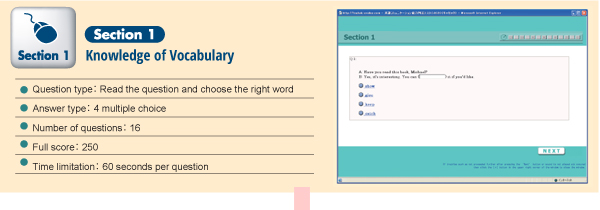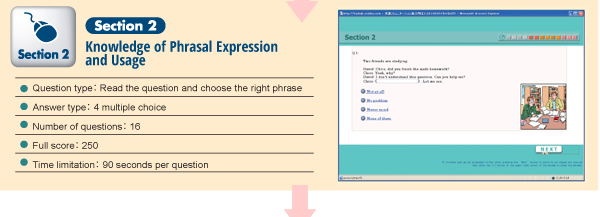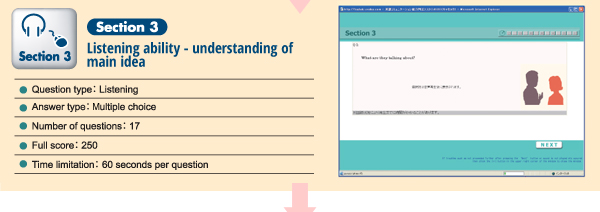Computerized Assessment System for
English Communication

 Test at once!
Test at once!Take the test right now!
With CASEC, one can always take a precise English test without having to go to a test site.

CASEC runs an adaptive system that varies the test questions according to the proficiency level of the candidate. Thus, it requires shorter time and returns more accurate proficiency measurement than conventional tests.

As CASEC is computer-based, scoring is done on the spot and the score is displayed immediately upon completion of the test. The scores are saved as history and can be browsed anytime on the Internet.
With Internet access, the test can be taken anytime, anywhere. You can check your proficiency level at your own convenience.
 Accurate Measurement
Accurate MeasurementProficiency test supported by IRT!
This testing method is based on IRT (Item Response Theory) and measures using a universal scale with the high degree of accuracy. The testing engine as well as item bank development are managed by professional psychometricians , statisticians and native subject matter experts.
CASEC scores the test in a way different from conventional tests that provide "scores based on correct answers" or "total aggregate of allocated points for correct answers" only. For conventional tests, 9 out of 10 questions answered correctly, for example, would result in 90 points. Points are given for the number of correct answers - more points for more correct answers. However, CASEC does not use this scoring method. To understand how CASEC scores, it may be use an 'eyesight test' as an example.
The usual eyesight test first shows a graphic of approximately 0.1 in size symbol at a mid-ranged size. Whether or not the subsequent symbols are bigger or smaller depends on whether the test taker can see the previous symbol or not (ie, correct or incorrect response), Finally, the smallest symbol the test taker can see is converted to a number (eg, 0.7).

CASEC uses the system in that the level of difficulty of the next question changes according to the correct/incorrect answer given by the candidate. If a question is correctly answered, the next question will be more difficult. If it is incorrectly answered, the next question will be easier. Finally, the appropriate level of difficulty is estimated based on the level of difficulty of the questions asked and the patterns derived from the correct and incorrect answers to each question. The estimated level is subsequently converted to a corresponding score. This operation is executed section by section, and the final score is derived by summing up the scores of all the sections.
It is rare but sometimes we get feedback such as "I did not get the correct answer (towards the end) but I actually scored higher (than expected)" or, on the contrary, "my answers were correct but I scored lower points". You would understand why this happen if you have read the above explanation - "CASEC does not score based on the number of correct answers alone."
 Corresponds to TOEIC®, TOEFL®
Corresponds to TOEIC®, TOEFL®CASEC displays your TOEIC® reference score, which can be used as a cross-referencing tool to check your learning outcomes.




